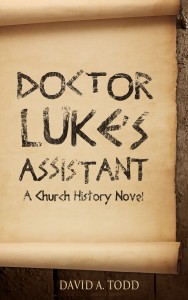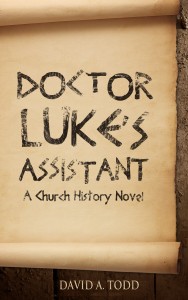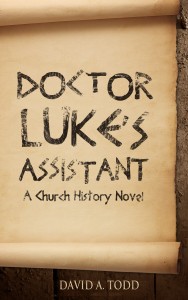I don’t know that the title came to me right away. I began to work on the novel in October 2000. I think. Could have been September or November, but I think it was October.
Understand that I knew nothing at all about writing a novel. My favorite novelist at that time were Herman Wouk and James Michener. Still are. They wrote family sagas, intergenerational tomes of considerable length. That’s what I started to write. I figured write the kind of novel I like, and surely there were millions of other book readers out there who liked the same thing.
So, knowing nothing about novels, not understanding such fundamentals as active vs. passive voice, show vs. tell, the utter idiocy of adjectives and adverbs, and commercial length, I began. I also knew nothing about how someone went about publishing a novel, or what kind of novels publishers were looking from by a debut novelist, but I didn’t need to know that for a few years. I just began writing.
By the end of December 2000 I had about 15,000 words. I think that was through what is now about chapter 4. At that point I laid it aside. I was building committee chairman for our church, and we were in the midst of a $2.8 million expansion. It would open in May 2001. Also in that month our son graduated from college, our daughter was married, our son moved to Boston for grad school. I was tired, and I think I kind of vegetated through the next few months. In August 2001 I had a heart attack scare, which slowed me, but during that time I started writing serious poetry. All of which took me away from the novel.
I believe it was December 2001 that I remembered I had started a novel some time before. I found it on our computer, re-read it and probably made some edits, and plunged back into it. All the while I was writing poetry, working on the harmony, doing my day job, and winding down from the church building project follow-up. Then in February 2002 we moved from our house of ten years to another house thirteen miles away.
The work associated with the move caused me to suspend work on the novel, but surprisingly I increased work on the harmony. I was able to do that in bits and snatches, a verse at a time in the evening. The novel, I found at that time, required a couple of dedicated hours or else I didn’t want to work on it.
A month or two after the move I got back on it, and made good progress. About that time my wife decided we should become foster parents. In our early 50s. I agreed, and from April to Sept 2002 we took the classes needed for being foster parents. Our house was licensed a foster home in September 2002, and the next day we were assigned brothers age 9 and 5. A month later we were assigned sisters age 4 and 5 months. So our empty nest suddenly became filled with children 9, 5, 4, and 5 months.
All of which has nothing to do with the novel. But it sort of does. I had written enough of it that I really wanted to finish it. I think when we got the foster children I was somewhere around 60,000 words. I didn’t know how long it was going to be, but I knew the material I wanted to cover. So I decided I was going to write at least 500 words a day. Most of these were in the evening, after the kids went to bed, when I was physically exhausted from dealing with them but with my mind still active.
At 500 words a day during the week and more on the weekend, I slowly completed the book. I think it was the first Sunday in January 2003 that I wrote three thousand words, two of which were “The End.” The first draft of Doctor Luke’s Assistant was finished.
And so is this post. In the next couple of posts I’ll talk about the research, aims I had in writing the novel, and then some of the early steps toward seeking publication.
See here for the first post in this story.
Go here for the next post in this story.


